SIT completes move to Punggol beside JTC Business Park; campus designed to foster ties with industry
Sign up now: Get ST's newsletters delivered to your inbox
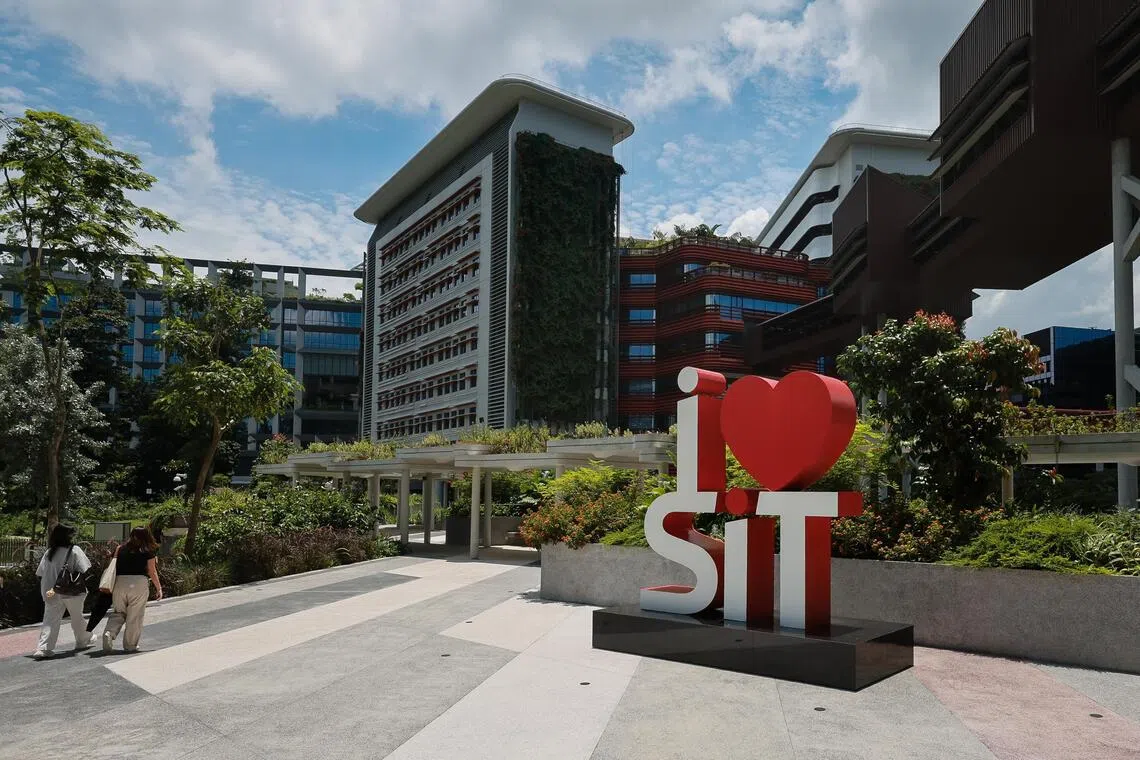
The campus, which has been fully operational since May with about 11,000 students and close to 1,300 staff, will officially launch on Sept 16.
ST PHOTO: GAVIN FOO
Follow topic:
- SIT's new Punggol campus officially launches on Sept 16, integrating learning with real-world practice and industry collaboration.
- Research projects, like the Brain-Computer Interface for stroke rehabilitation, are conducted in new labs, with the campus' living labs providing real-time data for learning and innovation.
- Partnerships with companies such as Nvidia and Engie help develop talent, test new innovations and drive entrepreneurship in the campus.
AI generated
SINGAPORE – In a lab at the Singapore Institute of Technology (SIT), an information and communications technology graduate student is hooked up to a computer via a cap studded with electrodes. The cap is reading her brain signals as she imagines moving her hand in a certain direction and speed.
When the “mind reader” machine learning model wrongly predicts the student’s hand motion, she demonstrates the correct motion to train it.
The aim is to eventually have stroke patients use such a machine to do “mental rehearsals” of moving their limbs, thereby helping them build brain plasticity, said Professor Vinod A. Prasad, director of the Infocomm Technology cluster at SIT.
This technology will be trialled with stroke survivors at Singapore General Hospital to guide them in active, instead of passive, rehabilitation. In this approach, physiotherapists help patients in gradually moving their hands until they recover their mobility.
This brain-computer interface system is one of the research projects being developed at the new Digital Health Innovation Lab in SIT’s Punggol campus.
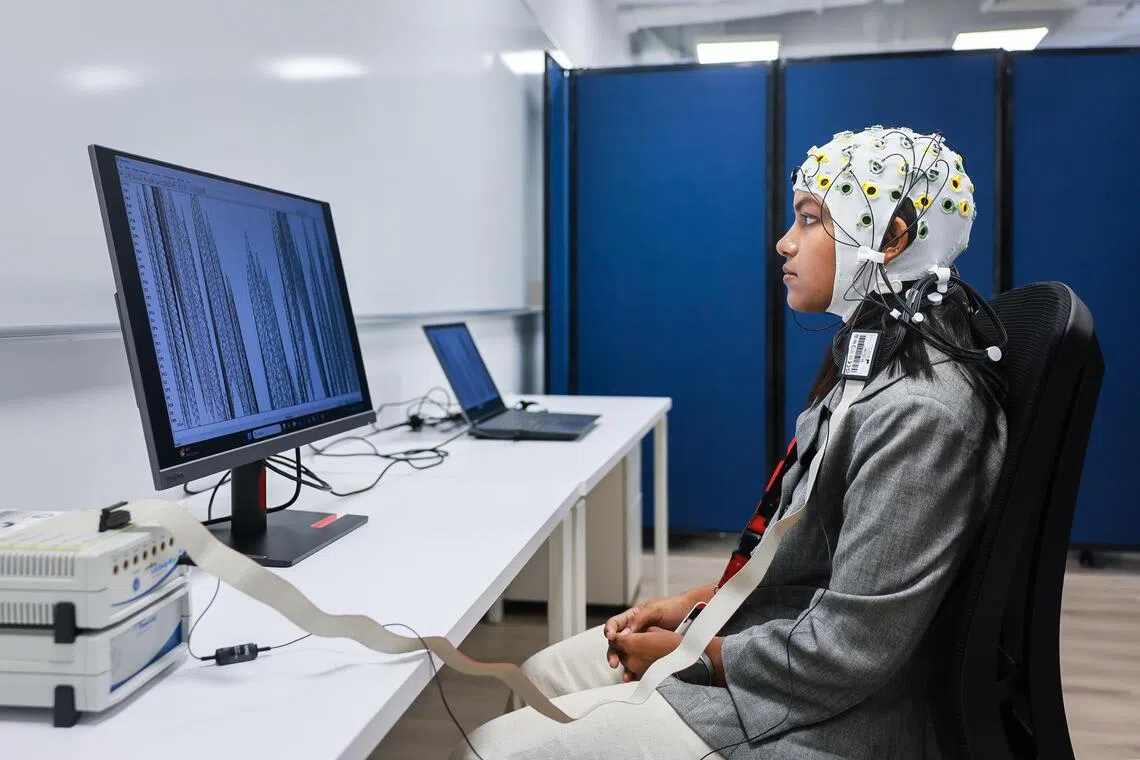
A Singapore Institute of Technology graduate student demonstrating the Brain-Computer Interface system in a lab at the school’s Punggol campus.
ST PHOTO: GAVIN FOO
The campus, which has been fully operational since May with about 11,000 students and close to 1,300 staff, will officially launch on Sept 16.
SIT, Singapore’s first university of applied learning, has completed the move to the new campus. It aims to apply learning to real-world practice and deepen collaboration with industry partners on research and innovation. Previously, SIT had six satellite campus locations.
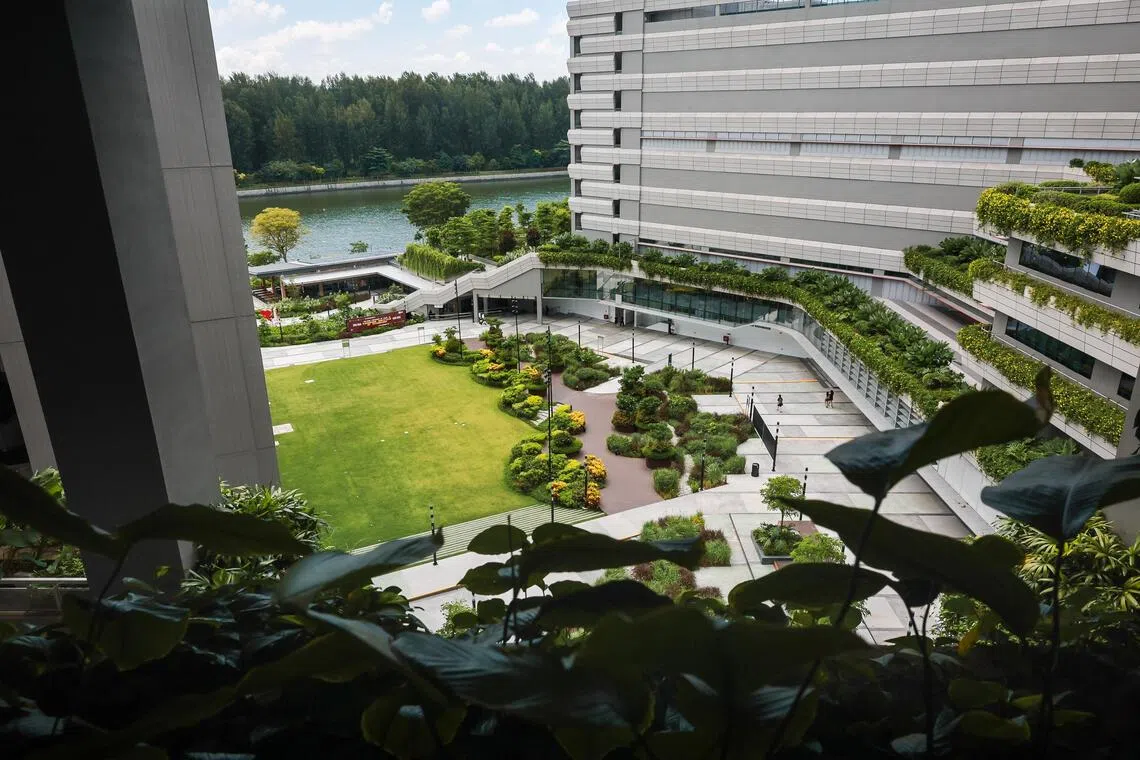
SIT aims to apply learning to real-world practice and deepen collaboration with industry partners on research and innovation.
ST PHOTO: GAVIN FOO
Located next to JTC Business Park, the campus comprises two plots – the 42,000 sq m Campus Court that faces the Coney Island waterfront, and the 49,000 sq m Campus Heart that features the Punggol Heritage Trail.
SIT is part of the Punggol Digital District, which had its masterplan developed by JTC Corporation and designed by WOHA.
“The campus is designed to foster close collaboration with the industry, with JTC Business Park next to us. It provides our students with opportunities for internships and to be involved in real work,” said Mr Gerry Wee Hwee Joon, SIT’s associate vice-president of estates.
The media was given a tour of the university’s new labs on Sept 3.
The Power and Energy Lab supports applied learning and research in electrical power systems.
It features a video wall that shows SIT’s real-time microgrid data and live system monitoring, enabling students and researchers to analyse power flows, study renewable integration and explore grid stability in a real-world operational environment.
SIT’s campus-wide digital infrastructure, called the Living Lab Network, provides students and companies with real-time access to operational campus data for learning and innovation.
Second-year electrical power engineering undergraduate Han Xing Xiu works in the lab for her buggy project, using the oscilloscope, power supply and waveform generator for measurement, testing and prototyping.
Ms Han, 20, said she enjoys the project but needs help to learn how to use the industry-standard equipment, as she previously attended a junior college, unlike many of her classmates, who came from polytechnics that offered more hands-on learning.
The aspiring engineer is also eager to take up electric transportation modules to know how electric vehicles (EVs) work and how they are charged. And the lab features a test bed with EV simulators, chargers and chambers for battery testing, allowing the safe testing of vehicle-to-grid scenarios.
SIT’s living labs also allow staff, students, industry and government stakeholders to jointly develop, test and deploy research ideas.
For instance, the university set up a district cooling system in partnership with global energy and services group Engie. The system will be used to create a test bed for the development and trialling of advanced district cooling solutions.
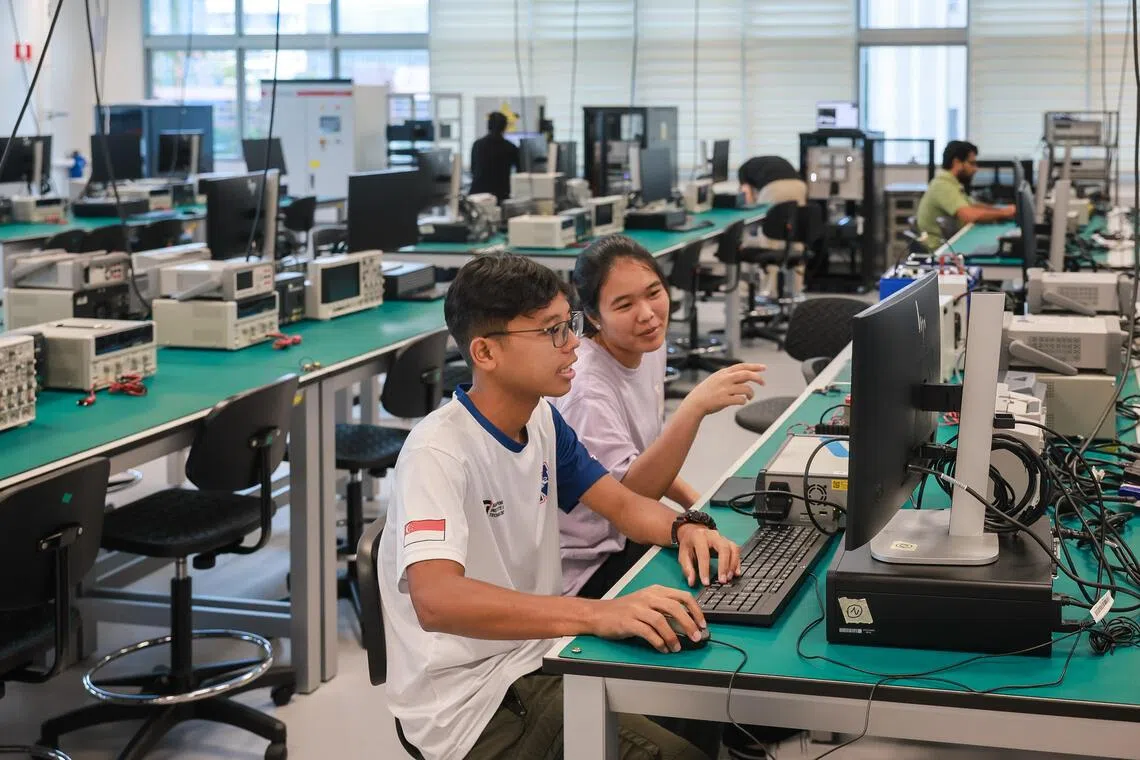
Students conducting experiments in the Power and Energy Lab at SIT’s Punggol campus.
ST PHOTO: GAVIN FOO
SIT and JTC have also set up a Living Lab Programme for companies to develop tech talent, enable collaboration on test bedding and drive entrepreneurship. Companies that have joined the programme include UOB, Target Media Culcreative, Wanxiang Blockchain and its partners, and dConstruct Robotics. These companies will create work attachment opportunities for SIT students.
Another centre, the SIT x Nvidia AI Centre, was set up by the university and Nvidia for applied AI research and innovation. The centre hopes to accelerate AI adoption across industries and nurture AI talent.
One applied research project conducted at the centre was a situation awareness system designed with SMRT for the transportation sector. It analyses commuter feedback from digital platforms and provides sentiment analysis, helping with process automation, underground situation monitoring and real-time intervention.

A student on a treadmill for a demonstration in SIT’s Mrs Wong-Mah Jia Lan Human Performance Lab.
ST PHOTO: GAVIN FOO
Another lab, called the Human Performance Lab, gives SIT Health and Social Sciences students – such as those studying physiotherapy – hands-on experience in measuring and analysing data to advance rehabilitation and enhance sports performance.
The lab boasts a cardiopulmonary exercise testing treadmill that evaluates heart and lung function, and is operated by faculty for teaching demonstrations.
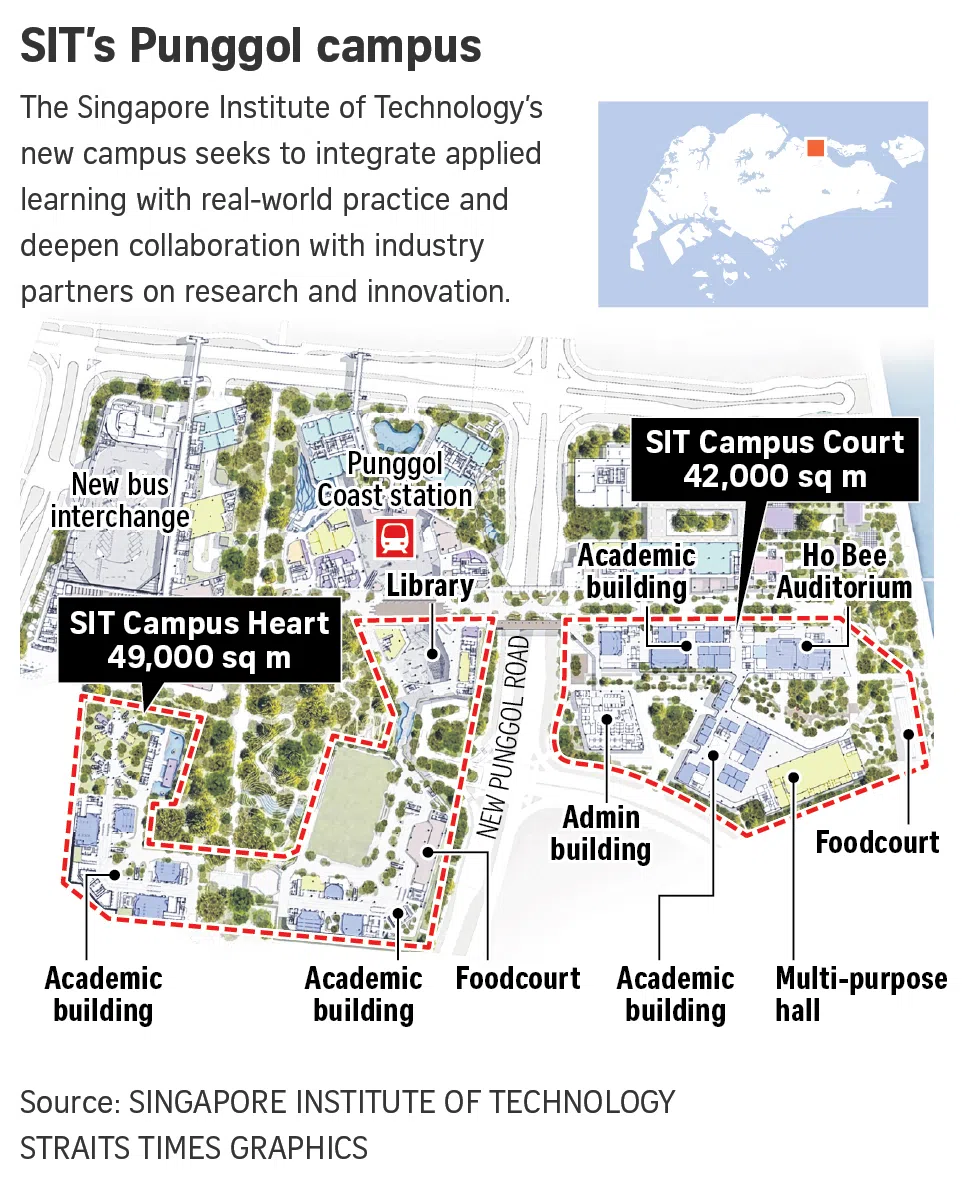
Correction note: In an earlier version of the story, we said that JTC designed the masterplan for the Punggol Digital District. WOHA has since clarified that while JTC developed the masterplan, WOHA designed it.


